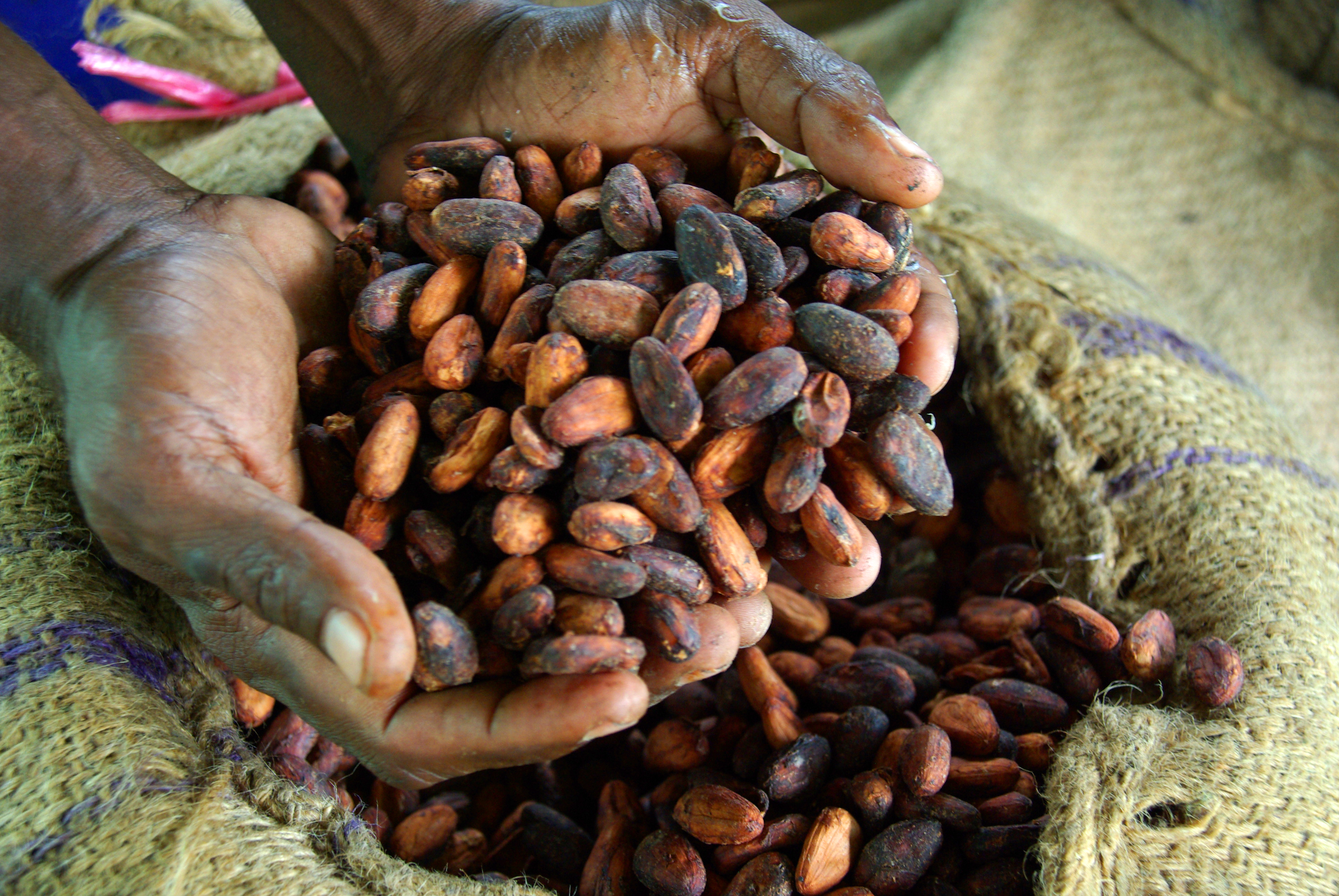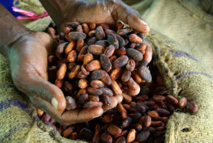The cost of cocoa on the world commodity markets continues to grow. From the beginning, it has risen in price by 13%. The reason is the threat of a significant lack of production and supply of cocoa in the world, hanging over the market. And this, in turn, is caused by adverse weather conditions: very dry and hot weather in West Africa and heavy rains in South America.
Futures for the supply of cocoa beans are traded on the two stock exchanges - in New York and London. Prices for cocoa futures for December delivery reached a new level of £ 2,2 thousand per ton - London Commodity Exchange trades for September 22. Prices for cocoa beans on the stock exchange in New York are established at the level of $ 3,312 thousand per ton. Cocoa beans were traded at this price this summer, in July, and before that - four years ago.
Abnormal heat and lack of rainfall in West Africa are linked to global ocean atmospheric phenomenon El Niño, which is cyclical in nature, has been on this planet for over a century and has a significant impact on the climate of the whole Earth.
In its previous cyclical peak, which took place in 1997 and 1998, El Niño led to global damages of $ 35 billion.
For the very reason, farmers in West Africa, which covers about 72% of world cocoa production, are expecting the harvest fall in the coming main season (from October 2015 to March 2016).
The situation is aggravated by the fact that in the major African exporters - Côte d'Ivoire, Ghana, Nigeria and Cameroon, about 80% of the cocoa are produced at small family farms, which in most cases are characterized by a lack of technical equipment and, as a consequence, low yields.
Some farmers have a lack of knowledge in important agricultural areas, such as maintaining soil fertility. Over time, the land, used for farmlands, get depleted, which leads to a further reduction of the crop.
Ghana, the second largest producer of cocoa beans in the world, developed another trend, leading to a reduction in the harvest of cocoa beans. Lands, designated for planting cocoa trees, have been actively sold to gold miners.
Against the background of low gold prices, they tend to increase the production of metal and thus compensate for the fall in prices due to higher sales volumes.
Through the fault of El Niño, the harvest of cocoa is expected to be reduced in Indonesia: it will fall to 2.39%, even though the country launched a campaign to double the production of cocoa beans in the next two years. In Ecuador, which is included in the ten largest producers of cocoa in the world, harvest fell by 6.16% because of too rainy weather.
Idea of enlarging cocoa crop in the short term have no chance: trees, fruit-bearing these beans, should be grown for about five years before the first harvest, and produce fruits not more than ten years.
The global problem of aging cocoa trees also causes investors’ worries about future supplies of cocoa on the market and leads to a further rise in prices for the goods.
According to Edward George, an analyst at Ecobank, the volume of production of cocoa beans in West Africa will decrease by 3.4% to 2.83 million tonnes for the 2015/16 main season.
The world's largest cocoa producer Ivory Coast, which supplies a third of all the cocoa beans in the world, will reduce the crop to 1.65 th. tons; Ghana - down to 720 th. tons, compared to the previously forecasted 900 th. tons.
By 2020, lack of supply of cocoa beans on the world market can lead to deficit of chocolate of about 1 million tons – forecasts the company Mars.
source: ft.com
Futures for the supply of cocoa beans are traded on the two stock exchanges - in New York and London. Prices for cocoa futures for December delivery reached a new level of £ 2,2 thousand per ton - London Commodity Exchange trades for September 22. Prices for cocoa beans on the stock exchange in New York are established at the level of $ 3,312 thousand per ton. Cocoa beans were traded at this price this summer, in July, and before that - four years ago.
Abnormal heat and lack of rainfall in West Africa are linked to global ocean atmospheric phenomenon El Niño, which is cyclical in nature, has been on this planet for over a century and has a significant impact on the climate of the whole Earth.
In its previous cyclical peak, which took place in 1997 and 1998, El Niño led to global damages of $ 35 billion.
For the very reason, farmers in West Africa, which covers about 72% of world cocoa production, are expecting the harvest fall in the coming main season (from October 2015 to March 2016).
The situation is aggravated by the fact that in the major African exporters - Côte d'Ivoire, Ghana, Nigeria and Cameroon, about 80% of the cocoa are produced at small family farms, which in most cases are characterized by a lack of technical equipment and, as a consequence, low yields.
Some farmers have a lack of knowledge in important agricultural areas, such as maintaining soil fertility. Over time, the land, used for farmlands, get depleted, which leads to a further reduction of the crop.
Ghana, the second largest producer of cocoa beans in the world, developed another trend, leading to a reduction in the harvest of cocoa beans. Lands, designated for planting cocoa trees, have been actively sold to gold miners.
Against the background of low gold prices, they tend to increase the production of metal and thus compensate for the fall in prices due to higher sales volumes.
Through the fault of El Niño, the harvest of cocoa is expected to be reduced in Indonesia: it will fall to 2.39%, even though the country launched a campaign to double the production of cocoa beans in the next two years. In Ecuador, which is included in the ten largest producers of cocoa in the world, harvest fell by 6.16% because of too rainy weather.
Idea of enlarging cocoa crop in the short term have no chance: trees, fruit-bearing these beans, should be grown for about five years before the first harvest, and produce fruits not more than ten years.
The global problem of aging cocoa trees also causes investors’ worries about future supplies of cocoa on the market and leads to a further rise in prices for the goods.
According to Edward George, an analyst at Ecobank, the volume of production of cocoa beans in West Africa will decrease by 3.4% to 2.83 million tonnes for the 2015/16 main season.
The world's largest cocoa producer Ivory Coast, which supplies a third of all the cocoa beans in the world, will reduce the crop to 1.65 th. tons; Ghana - down to 720 th. tons, compared to the previously forecasted 900 th. tons.
By 2020, lack of supply of cocoa beans on the world market can lead to deficit of chocolate of about 1 million tons – forecasts the company Mars.
source: ft.com



















